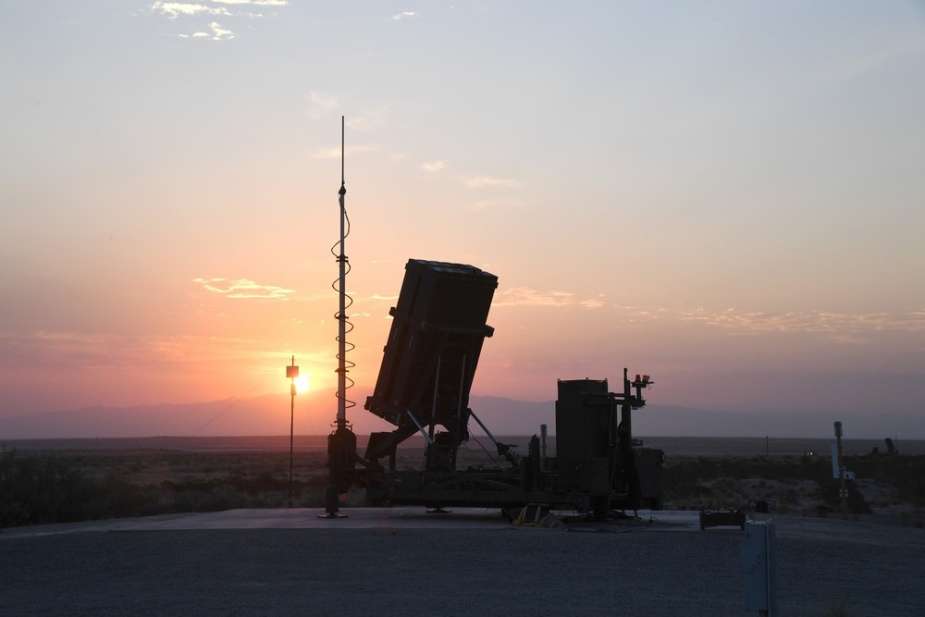On April 15, 2024, Israeli air defense systems successfully intercepted the majority of over 300 missiles and drones launched by Iran. Despite the high operational readiness of Israeli defenses to counter such a large volume of Iranian missiles and drones, the financial burden of the defense was substantial. Support from allies, particularly the United States, played a crucial role in the interception efforts. However, the damages sustained at the Nevatim air base could highlight the potential for saturation of air defense systems.
Follow Army Recognition on Google News at this link

US Army executes Iron Dome Defense System Scenarios 2-4 FRC in the United States (Picture source: US DoD )
Israel’s air defense is structured across multiple levels, equipped to handle threats from short-range rockets to intercontinental ballistic missiles, integrating both international cooperation and local technological developments. Key systems include the Iron Dome, designed for short-range threats; David's Sling for medium to long-range threats including drones and cruise missiles; and the Arrow 2 and Arrow 3 systems, targeting ballistic missiles at different phases of their trajectory, which were heavily utilized during the Iranian attack. The Barak-8 system also plays a vital role in intercepting aerial and missile threats up to 150 km.
While Israel's air defense systems provide adequate security, the cost of such defense is significant compared to the cost of the attack. Estimates suggest Iran spent approximately $49.15 million on its assault, which includes the cost of 170 Shahed drones at about $35,000 each, 30 cruise missiles at $1 million each, and 120 ballistic missiles at $110,000 each. However, this is seven times less than the $345 million spent by Israel, the United States, France, the United Kingdom, and Jordan to counter the drones and missiles launched by Tehran.
Israeli media estimate the cost of interceptions could reach up to $1.35 billion, covering only the interception of projectiles launched by Iran, not including marginal damages. The unit costs of the missiles used for these interceptions are also significant. An "Arrow" missile, used to intercept an Iranian ballistic missile, costs $3 million, while a "Magic Wand" missile—also known as David's Sling—costs $1 million. These costs include the aircraft sorties that participated in intercepting the Iranian drones.
The Israeli think tank Institute for National Security Studies (INSS) highlighted a figure of $560 million. This figure accounts for the expenses related to intercepting half of the Iranian missiles and drones, including the use of the David's Sling air defense system and the cost of maintaining 100 Israeli warplanes in the air for six hours, covering fuel and armaments. With the United States destroying 80 drones and at least 6 ballistic missiles, it appears they contributed nearly as much financially as the Israeli state.
However, this calculated figure only accounts for the armaments used to intercept the Iranian projectiles and the cost of operating Israeli, American, French, British, and Jordanian fighter jets, based on the models used by the different armed forces. A more accurate figure would include the number of personnel, infrastructure, and specific materials mobilized to respond to the Iranian attack. Factoring in the cost associated with deploying two American ships in the Eastern Mediterranean (USS Arleigh Burke and USS Carney) would significantly increase the final figure.
If the cost of projectiles used to intercept Iranian drones and missiles varies substantially, these calculations reveal a constant: although 99% of the projectiles were destroyed, such a massive attack is relatively sustainable financially, while the defensive cost is extremely high. Even though a Patriot system has advanced enough technology to relatively easily intercept a ballistic missile, the cost of the missile is on average 40 times more than that of the projectile.
The massive attack orchestrated by Iran against Israel raises the critical issue of saturation of air defense systems. By deploying a large number of projectiles at the same time, the goal is clear: to overwhelm the defensive capabilities of the adversary, even the most advanced, to increase the likelihood that at least some of the devices reach their targets. This saturation tactic tests not only the rapid response capability of systems like the Iron Dome, David's Sling, and the Arrow systems but also their endurance and ability to handle a high volume of simultaneous threats.
The robustness and effectiveness of Israel's air defense networks are crucial in facing such assaults. Their multi-layered design is specifically intended to counter various types of threats at different altitudes and speeds, providing an additional layer of security. However, the constant threat of saturation by multiple projectiles poses a permanent challenge, requiring continual updates to defensive technologies and strategies to improve detection, tracking, and interception of multiple targets under high-density conditions. Interception of all missiles and drones launched proves complex, as evidenced by the damages at Nevatim air base.
Furthermore, it is important to consider the limited capabilities of Iran. While it appears that all 170 drones and 30 cruise missiles were destroyed near or within Israeli airspace, U.S. officials stated that half of the 120 Iranian ballistic missiles "were not launched or crashed in flight before reaching their target."
Defense News April 2024
















